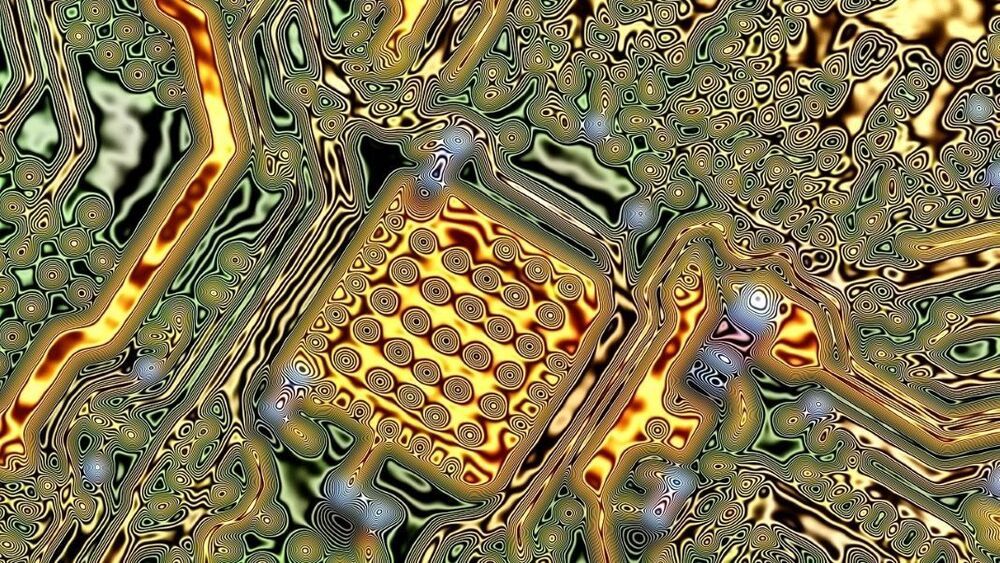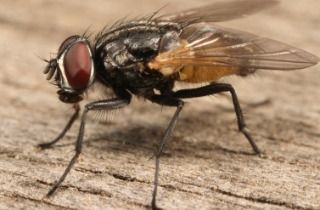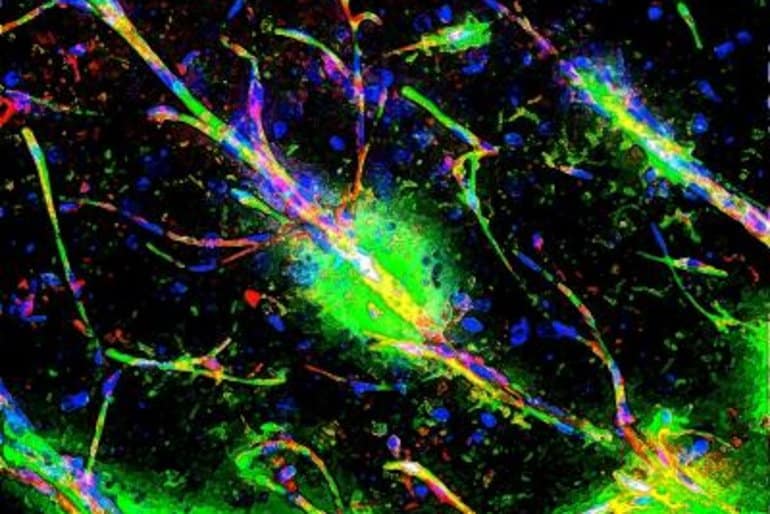Glauber Contessoto of Los Angeles posted a screenshot of his Robinhood balance of Dogecoin on Reddit.
Get the latest international news and world events from around the world.

Advancing AI With a Supercomputer: A Blueprint for an Optoelectronic ‘Brain’
Others think we’re still missing fundamental aspects of how intelligence works, and that the best way to fill the gaps is to borrow from nature. For many that means building “neuromorphic” hardware that more closely mimics the architecture and operation of biological brains.
The problem is that the existing computer technology we have at our disposal looks very different from biological information processing systems, and operates on completely different principles. For a start, modern computers are digital and neurons are analog. And although both rely on electrical signals, they come in very different flavors, and the brain also uses a host of chemical signals to carry out processing.
Now though, researchers at NIST think they’ve found a way to combine existing technologies in a way that could mimic the core attributes of the brain. Using their approach, they outline a blueprint for a “neuromorphic supercomputer” that could not only match, but surpass the physical limits of biological systems.

The VA Is Testing an Implant That Could Allow Paralyzed Veterans to Walk Again
“While epidural stimulators have shown some degree of success with limb paralysis in research elsewhere, this is the first such study at the VA, explained Dr. Ashraf Gorgey, chief of spinal cord injury research at the Richmond hospital. Gorgey said the study has several goals: to see how well an epidural stimulator made by Medtronic for pain management can work on spinal cord injuries and to demonstrate the promise of the technology, which can be implanted with minimum surgery. “With this study, we might get companies like Medtronic and Boston Scientific to start creating something more specific for spinal cord injuries,” he said. “We also want to show that you don’t need invasive surgery to use this device. We use just a needle under fluoroscopy, and through the needle, we thread the leads in. On the same day Josh had his surgery, he was down in this room working out on the mat.””
That immediate change following the implant bolstered confidence in his decision to enroll in the research, he added.
When he is not at the VA — he spends 90 minutes there three times a week — Burch works with his brother, Travis, also a former Marine, renovating and flipping houses in Portsmouth, and he plays on two wheelchair rugby teams. He credits the sport, once known as murderball, and his teammates on the Oscar Mike Militia, an all-veterans team, for his recovery to date.
“The first tournament I ever went to, I had my mom with me because I couldn’t really do anything. And my teammates were like, ‘You gonna bring your mommy to every tournament?’ I was like, ‘OK, I need to learn to be independent,’” Burch said.

Is a cheap ‘universal’ coronavirus vaccine on the way?
Two important sars-cov-2/covid-19 links.
~~~
An experimental COVID-19 vaccine could potentially provide universal protection against future COVID variants as well as other coronaviruses—maybe even the ones responsible for the common cold. And it’s dirt cheap—less than $1 a dose, researchers say.
The vaccine targets a part of the COVID virus’ spike protein that appears to be highly resistant to mutation and is common across nearly all coronaviruses, said senior researcher Dr. Steven Zeichner. He is a professor of pediatric infectious disease with the University of Virginia, in Charlottesville.
In animal studies, the COVID vaccine protected pigs against two separate diseases caused by two types of coronavirus, COVID-19 and porcine epidemic diarrhea virus (PEDV), according to results published online recently in the Proceedings of the National Academy of Sciences.

Clear link emerges between COVID-19 and pregnancy complications
The study also linked COVID-19 to a 60% to 97% increased rate of preterm birth, and— in infected women with a fever and shortness of breath—to a fivefold increase in neonatal complications such as immature lungs, brain damage, and eye disorders. About 13% of babies tested positive for the virus, and cesarean delivery was linked to a higher risk of transmission. Breastfeeding didn’t appear to transmit the virus—a small bit of good news.
New study bolsters the case for vaccinating pregnant women.

Intermittent Fasting for Longevity: The Science Behind the Hype
Mice fed every other day in another study lived, on average, 12% longer than mice fed every day, largely due to the delay of cancerous diseases.
Affiliate Disclaimer: Longevity Advice is reader-supported. When you buy something using links on our site, we may earn a few bucks.
According to the International Food Information Council’s 2020 Food and Health Survey, you most likely know someone who is practicing intermittent fasting. The survey of 1000 adult Americans found that one in ten were putting down the fork during specified periods of time, making it America’s most popular “diet.”
It’s no surprise that the diet has charmed so many Americans. Intermittent fasting is the preferred diet of celebrities, from Kourtney Kardashian to Twitter CEO Jack Dorsey, and is reportedly a staple of Silicon Valley culture. Fox News reported that it’s “hailed by trainers [and] doctors as [an] easy weight loss program that works.”

The Space Renaissance Medici Fund Announces Three Student Sponsored Programmes
**Space Renaissance International (SRI) Medici Fund** is happy to announce that, due to the generosity of our Education Sponsors, we are able to award a few **prizes and grants for students** of any age, interested to space settlement, exploration and civilian development. Three programmes are now open to applicants, in the frame of the **2021 Space Renaissance Congress “The Civilian Space Development”**.
The 3° SRI World Congress (SRIC3) will take place in a virtual format and will provide attendees with cutting-edge developments in Space Settlement & Exploration, Human Rights, Ethics, Policies, Engineering, Entrepreneurship, Energy, Economics and Education from leaders in their respective fields. Experts in research and industry will present the emerging technologies and future directions in their field. Students at all ages, who are interested in Space Science, Technology, Philosophy, Economy, Policy, Law, Art, are warmly encouraged to participate to the 2021 Space Renaissance Congress. Please visit this link to apply to any of the Student Sponsored Programmes: https://2021.spacerenaissance.space/index.php/students-sponsored-programs/

BREAKING NEWS! America Study Confirms That House Flies Can Carry SARS-CoV-2 Virus Up To 24 hours After Exposure And Are Potential Vectors!
A new study by American researchers from Kansas State University and Agricultural Research Service have alarmingly found that house flies can carry the SARS-CoV-2 coronavirus for up to 24 hours after exposure and are potential transmission vectors of the SARS-CoV-2 coronavirus!
House flies are known to transmit bacterial, parasitic and viral diseases to humans and animals as mechanical vectors. Previous studies have shown that house flies can mechanically transmit coronaviruses, such as turkey coronavirus; however, the house fly’s role in SARS-CoV-2 transmission was not explored until now. The goal of the study was to investigate the potential of house flies to mechanically transmit SARS-CoV-2.

The Immune Link Between a Leaky Blood-Brain Barrier and Schizophrenia
The work adds to a growing body of evidence suggesting that schizophrenia and certain other neuropsychiatric conditions may be in part neuroinflammatory disorders.
Summary: People with schizophrenia and other neuropsychiatric disorders may have a more permissive blood-brain barrier which allows the immune system to become more actively involved in the central nervous system. The resulting inflammation may contribute to the clinical manifestation of psychosis-like symptoms.
Source: University of Pennsylvania
Like a stern bodyguard for the central nervous sytem, the blood-brain barrier keeps out anything that could lead to disease and dangerous inflammation–at least when all is functioning normally.
That may not be the case in people with schizophrenia and other mental disorders, suggest new findings from a team led by researchers from the School of Veterinary Medicine, Perelman School of Medicine, and Children’s Hospital of Philadelphia (CHOP).

FDA to scrutinize unproven cancer drugs after 10-year gap
The U.S. spends more per person on prescription drugs than any other nation, and spending on cancer drugs has more than doubled since 2013 to over $60 billion annually, according to the data firm IQVIA. New medications typically cost $90000 to $300000 a year. And those prices have risen much faster than patient survival.
Each year the U.S. approves dozens of new uses for cancer drugs based on early signs that they can shrink or slow the spread of tumors.